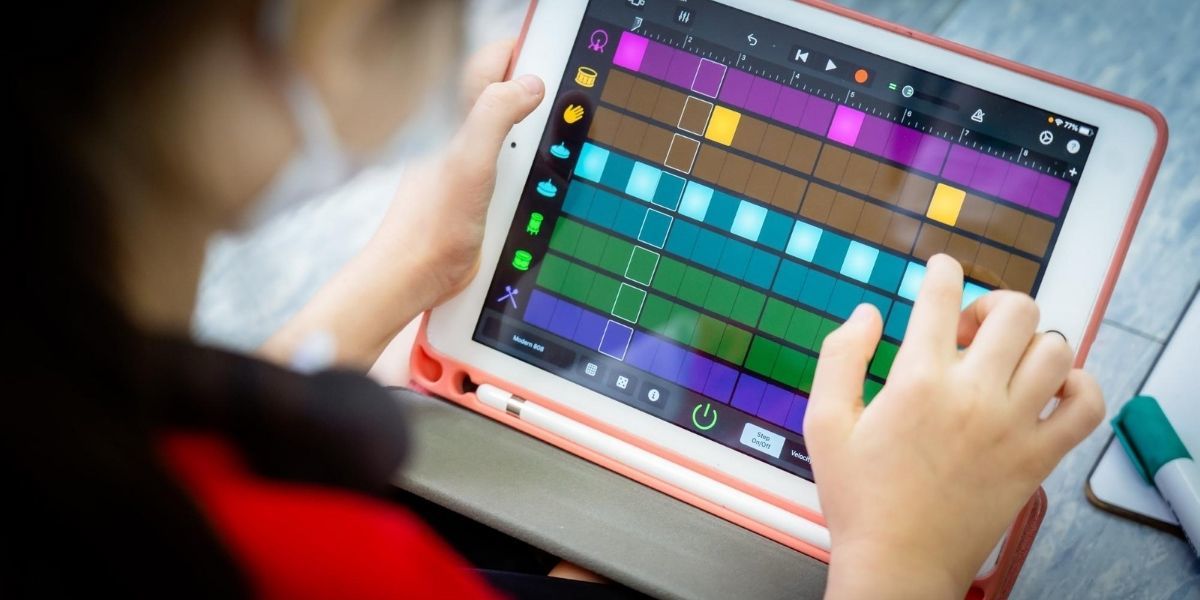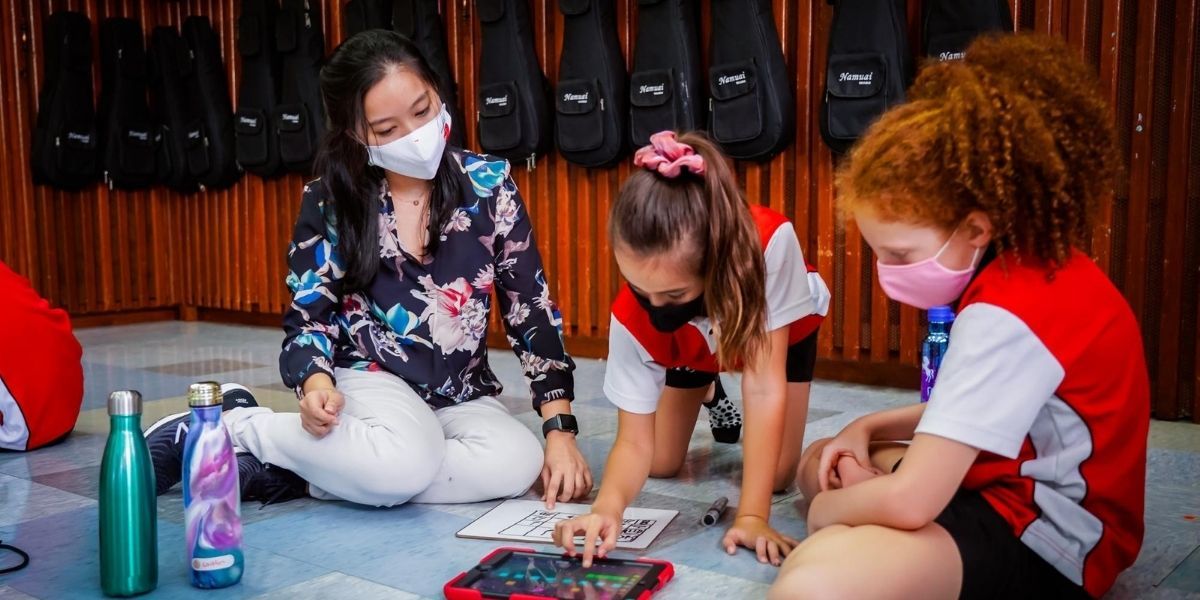Turn the beat around: bringing fractions and Chinese poetry to life in the classroom
Watching someone play the drums can seem a bit mysterious and magical at first. The drummer coordinates two hands and one foot to create drum beats in perfect sequence. If the drummer is experienced, the process will seem effortless. Yet, if a beginner were to try replicating a beat he has in his head on the drum, it wouldn’t sound very good!
Although sitting someone at a drum set and encouraging them to pound away is one way to teach rhythms, it may be counterproductive because rhythms don’t come naturally to a lot of people. Take riding a bicycle for example. There are usually too many things to coordinate so a set of training wheels comes in handy and helps the person to learn faster.
The same goes for learning music. So to make it easier for my students to learn how to create rhythmic beats on the drum, I integrated the use of a “training wheel” — the sequencer in GarageBand, the Apple software that turns your Macbook or iPad into a digital audio station.
Bringing fractions to life through music
Students find it easier to learn a new subject when they apply the knowledge they have gained in another subject insteading of starting entirely from scratch. For example, students with a rudimentary understanding of fractions in maths can understand that halves stack up nicely with each other. The same goes for quarters, eights, and sixteenths.
This knowledge can help students in the GarageBand sequencer because adding a drum beat is as simple as tapping every 16th square on the screen. At the same time, they quickly learn the relationship between the 16th and 8th notes etc by tapping the appropriate squares. Since the GarageBand sequencer provides immediate playback, the students are able to keep track of their progress. This keeps them motivated and helps them gain a deeper appreciation of maths.

Rapping with language
Aside from maths, students have also been learning poetry during Chinese language lessons. Using what they have learned in class, they transformed Chinese poetry into a rap matched by the beats they had created in the GarageBeat sequencer. Talk about transdisciplinary learning!

Thanks to the GarageBand sequencer, students were able to visualise complex rhythms and musical concepts. At the same time, they gained a deeper understanding of subjects like maths and Chinese language. This type of transdisciplinary learning really helps students to make connections across different subjects for a more integrated experience!